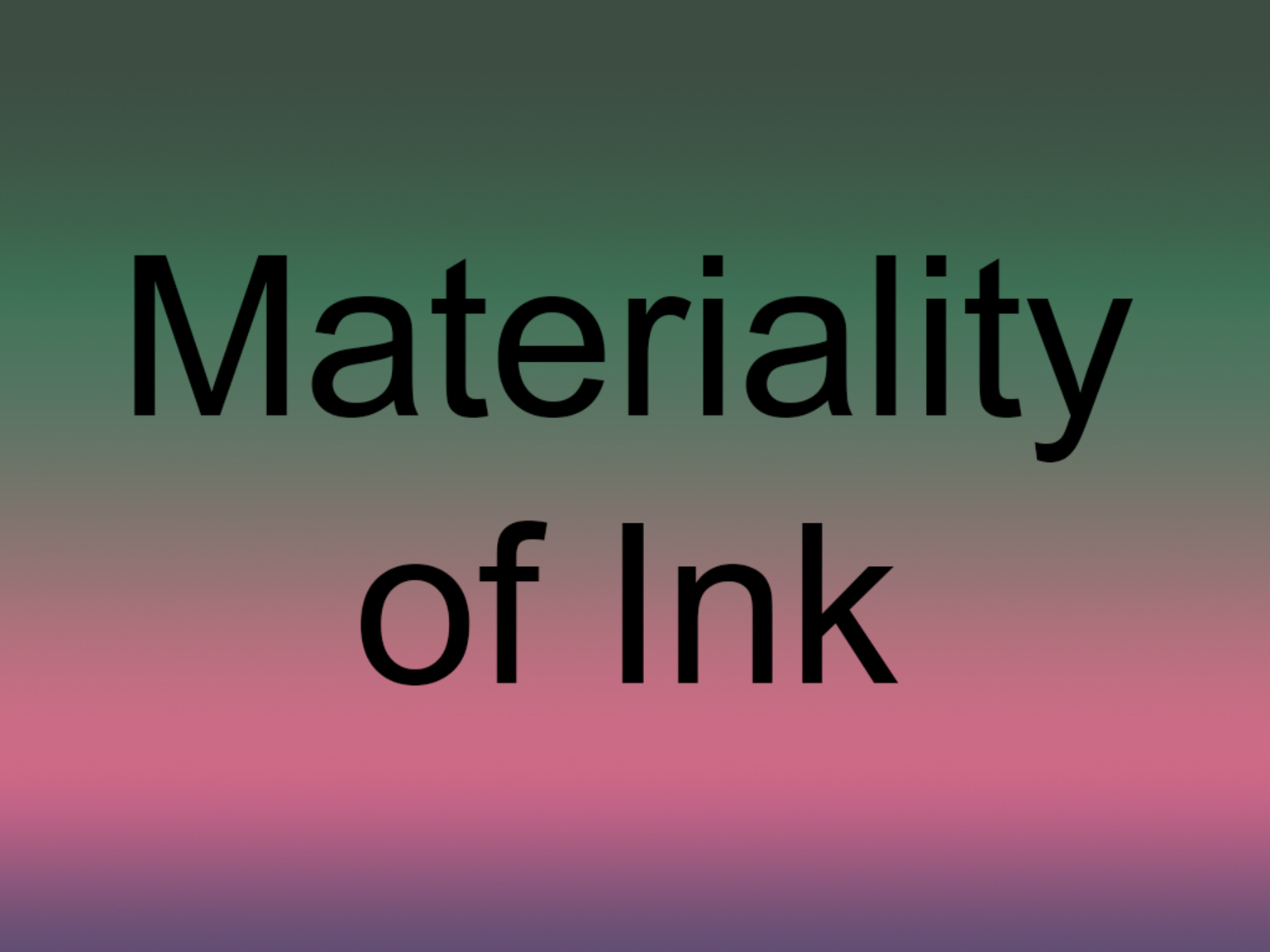Seminar/konferanse

Materiality of Ink
In this one-day seminar at KHiO, international leading experts in their academic, artistic, manufacturing, and scientific fields of research will respond to Barbara Balfour’s Inkling, Thinking About Ink (2022).
"Something about the visual apprehension of ink, something about the haptic nature of ink, something about ink as a substance in and of itself, something about how printmakers are drawn to ink, it’s an inkling I have.'’ Barbara Balfour (2022).
In this one-day seminar at KHiO, international leading experts in their academic, artistic, manufacturing, and scientific fields of research, respond to Barbara Balfour’s Inkling: thinking about ink (2022).
An exhibition of material artefacts embodying guest speakers' presentations, is located in KHiO's library and reception, and will be accessible for attendees during the seminar.
Artists are drawn to the haptic and visual presence of ink in the workshop, but now also question the socio-political and environmental impact of sourcing materials within a global distribution. For example, what are the ethical considerations when mining lapis lazuli in Afghanistan, to be ground into blue pigment?
In addition, with a reduction in craft making of artists’ colours, and an increase in mass manufacturing of inorganic and synthetic pigments, there is now an ‘inkling’ amongst printmakers to suggest that the materiality of ink has also transformed, perhaps even diminished.
SCHEDULE
10.00 - Introduction
10.15 - Barbara Balfour
11.00 - Michael Craine
11.45 - Lunch
12.30 - Carinna Parraman
13.15 - Marte Johnslien
14.00 - Break
14.15 - Q&A with speakers
14.45 - Finish (with 15 minute leeway)
Zoom Webinar password; 618467
Academic: Barbara Balfour. Professor, York University, Canada
Barbara is Professor in the Visual Arts and Art History department at York University. She teaches lithography, artists’ books, extended print practice and practice-based methodology. Her artistic practice has long involved the relationship between the textual and the visual. ‘Inkling: thinking about ink’ refers to Balfour’s recent research paper delivered at IMPACT12, an international printmaking artistic research conference.
Manufacturer: Michael Craine. Managing Director, Cranfields Colours Ltd, Wales, UK
Michael is a member of the European Artists’ Colour Makers Association (EuACA). He studied ink & paint chemistry, working initially in the paper industry before taking over the family business set up the Cranfield Group in 1976; to continue colour making craft, machinery, and methods for artists’ colour, using traditional processes to create quality dry pigment inks.
Scientist: Carinna Parraman, PhD. Director, Centre for Print Research, UWE, UK
Carinna is a research supervisor at NTNU and a specialist in colour printing and Red-Green-Blue (RGB) pigment printing; the appearance of colour and materials and how these are captured and reproduced in paintings and photographs; colour theory and perception within the fields of fine art, design and industry, and in particular the craft of the digital.
Artist: Marte Johnslien, PhD. Associate Professor of Ceramics, Kunsthøgskolen i Oslo, Norway
Marte’s joint project ‘The Materiality of White’, explores how the Norwegian innovation of titanium dioxide has changed surfaces in art, architecture and design. She situates her artistic practice on the one hand, with the traditions and history of art and craft, and on the other hand a contemporary interest in the thinking of materials and their relation to environmental, economic, industrial and institutional ecologies.
Artist: Marte Johnslien, PhD. Associate Professor of Ceramics, Kunsthøgskolen i Oslo, Norway
Marte’s joint project ‘The Materiality of White’, explores how the Norwegian innovation of titanium dioxide has changed surfaces in art, architecture and design. She situates her artistic practice on the one hand, with the traditions and history of art and craft, and on the other hand a contemporary interest in the thinking of materials and their relation to environmental, economic, industrial and institutional ecologies.
.